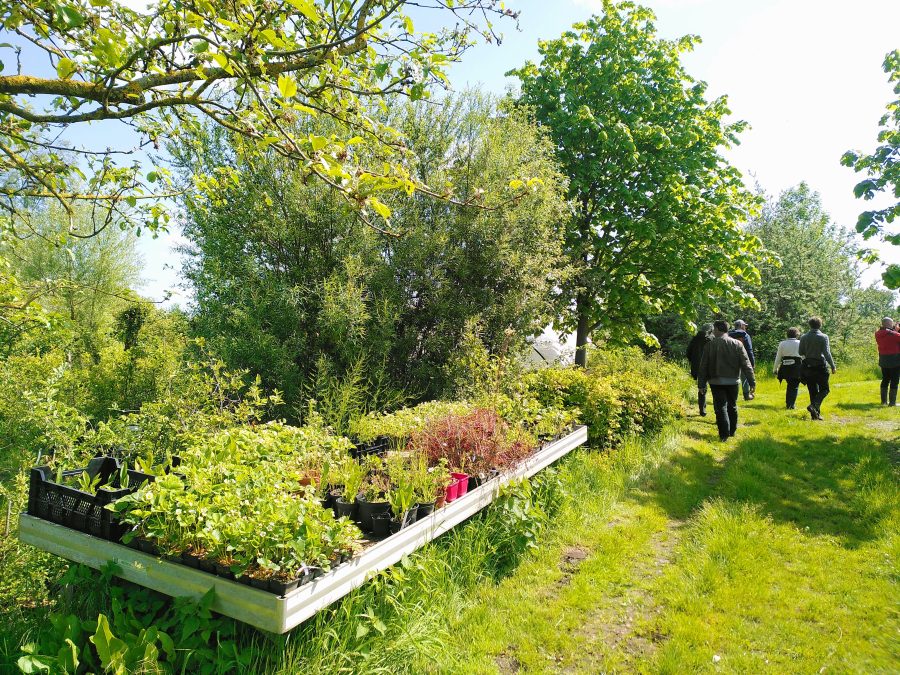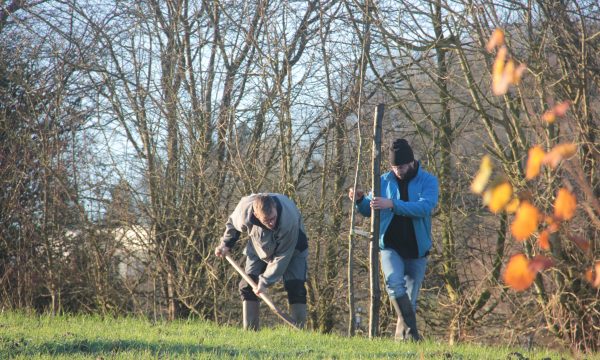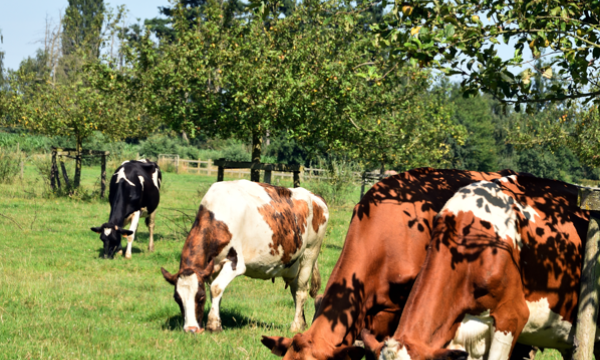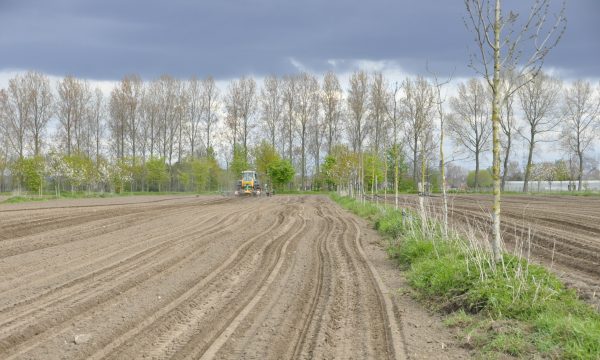Press release Food forest as a revenue model reviewed for the first time

Food forests can be a profitable industry for Flemish farmers. This emerges from the first farm-level economic calculation of a fictitious but realistic 0.8-hectare food forest, summarized in a handy fact sheet (in Dutch). It is economically interesting as a food forest grower to organize part of the sales through self-picking, to give workshops or tours and to sell both fresh and processed products. It also pays to outsource some labor and apply for subsidies from the Flemish government. The latter can save a farmer up to almost 30% of the total investment cost. These are some striking conclusions from the study by the Institute for Agricultural, Fisheries and Food Research (ILVO).
The run-through is part of a series of similar case studies for various agroforestry systems. They were developed in the framework of the VLAIO research project Agroforestry 2025 and the Operational Group FoodForward. From FoodForward the final report is also ready, a handy roadmap including an overview of relevant legislation and current, scientific state of affairs.
Helena Tavernier (ILVO): "This is the first time that insight into the costs and benefits of a food forest is provided and that all relevant knowledge and legislation is clearly put together. Both documents are a useful guide for farmers considering starting a food forest."Food forests in Flanders: still a niche, but interest is growing
Food forests can provide other ecosystem services besides food, such as biodiversity, carbon storage, water management, cooling and amenity. The exact area and number of farmers already working with food forests is difficult to determine, but it is clearly still a niche in Flanders. A master's thesis at UGent on a sample of 21 Flemish food forests found that half were only established between 2015 and 2020 and are therefore still very young. More than half are also smaller than half a hectare, and only 2 food forests could already produce a full income at the time of the study.
The case study
Because lack of understanding of costs and benefits is a major obstacle for interested farmers, ILVO carried out a business calculation of a fictitious but realistic food forest. The case study is largely based on the experimental site of Eetbos Deinze and assumes a conversion of 0.8 ha of grassland to food forest. The concrete interpretation and marketing possibilities were determined in consultation with three Flemish food forest farmers and researchers, to make it as realistic as possible. The calculation is purely financial and does not take depreciation into account. Moreover, it assumes professional farmers who convert part of their farm and thus do not have to lease or purchase additional land or large agricultural machinery.
Figures on labor time and yield of shrubs and trees are the biggest uncertainty in the calculation model. Sarah Carton (ILVO): "Not only because of the fact that few food forests are mature, but also because it requires a considerable time investment on the part of food forest farmers to precisely measure the yield of their woody crops and their labor hours. Fortunately, we received input from three Flemish food forest farmers in FoodForward and were able to use existing calculation models to still come up with realistic estimates."Fact sheet offers inspiration for business choices
The run-through provides insight into what factors affect profitability. Some notable results:
- Besides planting about 1,000 trees and shrubs, building and setting up a farm store is a significant investment. Yet it is valuable to have that store, for selling not only fresh but also processed, longer shelf-life products. This allows for sales throughout the year, instead of only during harvest time.
- Taking the Flemish government's planting and maintenance subsidies into account when planning and establishing a food forest pays off. In the case study, this amounted to a discount of almost 30% of the total investment cost.
- Some labor is deliberately outsourced, such as planting by a contractor and sales and store cleaning by a job student. In some cases it may be of interest to have the harvesting done by customers (self-picking).
- In addition to selling fruits and processed products, the fictional food forest derives income from workshops and educational tours. This often brings in new customers for the self-picking or farm store. Workshops and tours do require an additional investment of time and skills from the farmer.
More info and details: Factsheet Voedselbossen
FoodForward final report: solid reference work
This ‘draaiboek voor voedselbossen in de landbouw’ is the first document for Flanders to explore the potential of food forests for farmers. It offers a quick look at ongoing initiatives and relevant legislation in Flanders, gives a state of the art of scientific knowledge, and makes theory tangible through some real design cases. Earning models are also discussed in this work. FoodForward was an Operational Group in which ILVO, HOGENT, BOS+, Food Forest Institute, Forest Farm, Eetbos Deinze, De Woudezel and Het Polderveld searched for handles to facilitate food forests as an alternative earning model for agriculture.
More fact sheets and economic tools
In the VLAIO project Agroforestry 2025, the partners of the Consortium Agroforestry Vlaanderen on increasing the applicability of agroforestry systems such as food forests, including by developing viable financing and revenue models. The project is in its final phase and will launch more fact sheets in the coming months. Starting in May, the INTACT tool will also come online that allows farmers to conduct their own cost-benefit analysis of their plan. All of the Consortium's decision support tools can be found on the Agroforestry Planner.
 |  |  |


